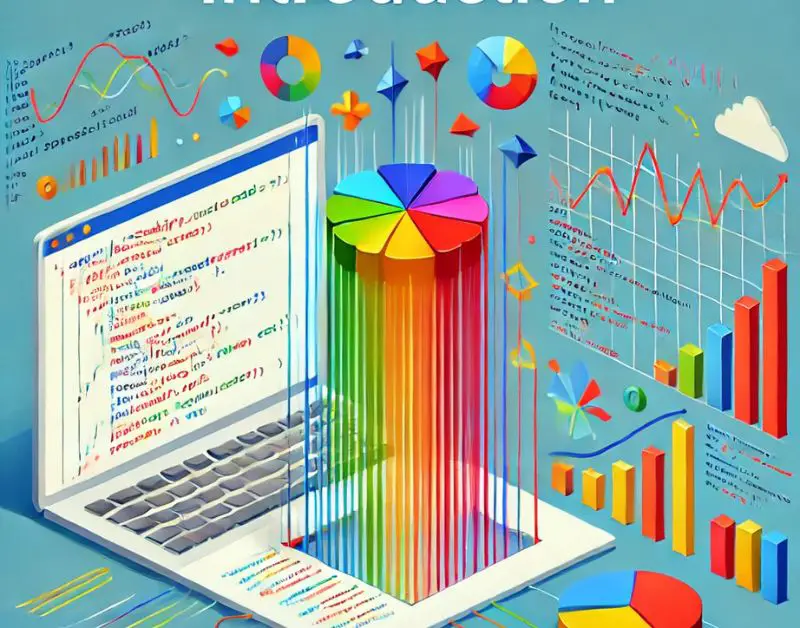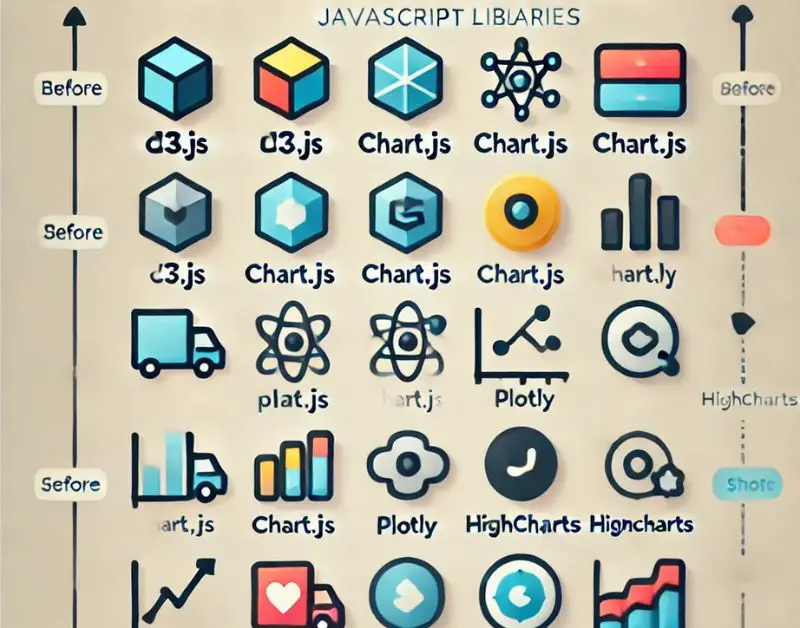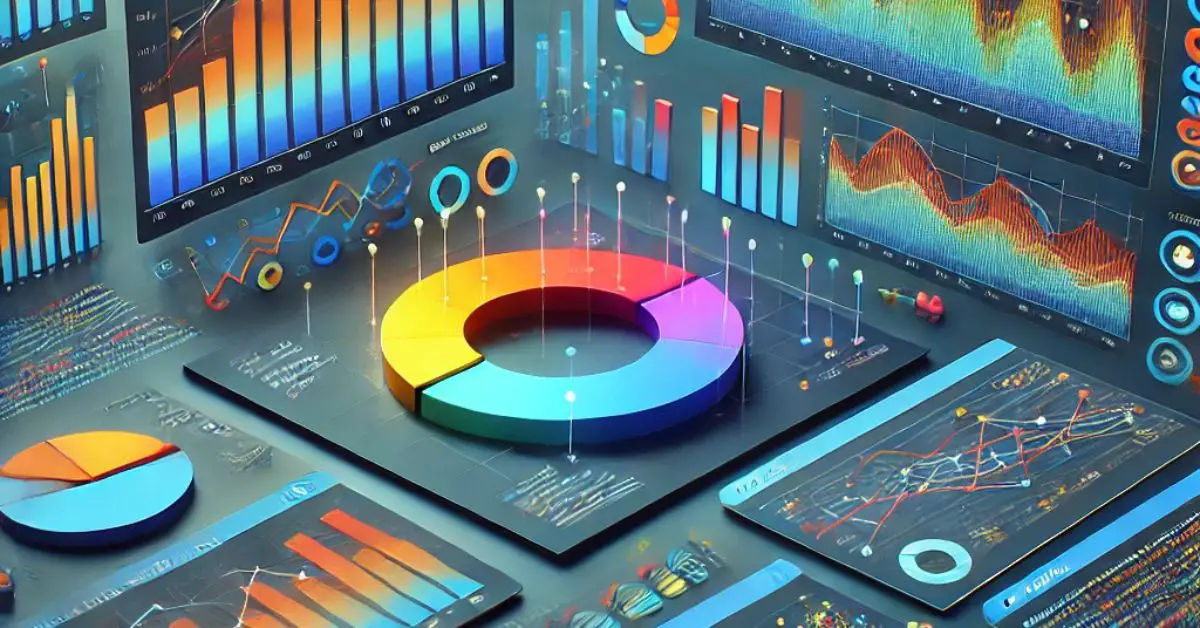In the world of web development, data visualization is an essential skill that can transform complex datasets into engaging and understandable graphics. Whether you’re a developer working on data-heavy applications or a data analyst looking to present insights effectively, using the right JavaScript library can make all the difference. Here’s a rundown of some of the best JavaScript libraries for data visualization.

1. D3.js
Website: D3.js
Overview: D3.js (Data-Driven Documents) is a powerful JavaScript library for creating dynamic and interactive data visualizations in web browsers. It leverages the full capabilities of modern browsers, enabling you to bind arbitrary data to a Document Object Model (DOM) and apply data-driven transformations.
Pros:
- Highly customizable and flexible
- Supports a wide range of visualizations
- Strong community support and extensive documentation
Cons:
- Steeper learning curve for beginners
- Requires more lines of code compared to simpler libraries
2. Chart.js
Website: Chart.js
Overview: Chart.js is a user-friendly library for creating simple yet visually appealing charts. It offers an easy-to-use API and supports various chart types, including line, bar, radar, and doughnut charts.
Pros:
- Simple to set up and use
- Good for small to medium-sized datasets
- Responsive and interactive
Cons:
- Limited customization options compared to D3.js
- Not ideal for very complex visualizations
3. Plotly.js
Website: Plotly.js
Overview: Plotly.js is a powerful library for creating interactive plots and charts. It’s built on top of D3.js and supports a wide variety of chart types, including 3D charts and statistical charts.
Pros:
- Great for complex and interactive visualizations
- Excellent for scientific and analytical applications
- Easy integration with Python and R for data analysis
Cons:
- Larger file size compared to other libraries
- Learning curve can be steep for advanced features
4. Highcharts
Website: Highcharts
Overview: Highcharts is a commercial library that provides a robust set of charting tools, making it easy to create interactive charts for web applications. It supports various chart types and is highly customizable.
Pros:
- Excellent documentation and support
- Can handle large datasets efficiently
- Supports export options (PDF, PNG)
Cons:
- Free for personal and non-commercial use only; licensing fees for commercial use
- Requires JavaScript knowledge for advanced customization
5. ECharts
Website: ECharts
Overview: Developed by Baidu, ECharts is a powerful, interactive charting and visualization library for browser applications. It excels at handling large datasets and offers a variety of visualization types.
Pros:
- Highly customizable and efficient with large datasets
- Supports geographical visualizations and complex interactions
- Built-in themes and styles for easy customization
Cons:
- Documentation can be less comprehensive than others
- Requires more time to master its extensive features

Conclusion
Choosing the right JavaScript library for data visualization depends on your project requirements and personal preferences. If you’re looking for flexibility and customization, D3.js is the way to go. For quick and easy charts, Chart.js is perfect. For more complex visualizations, consider Plotly.js or Highcharts. ECharts is great for handling larger datasets and geographical data.
No matter which library you choose, mastering data visualization will enable you to present data effectively, making your insights more accessible to your audience. Have you used any of these libraries? What are your favorites for data visualization? Let’s discuss in the comments!
Enhancing Web Applications with AI
Using OpenAI for Data Analysis and Visualization
Arsalan Malik is a passionate Software Engineer and the Founder of Makemychance.com. A proud CDAC-qualified developer, Arsalan specializes in full-stack web development, with expertise in technologies like Node.js, PHP, WordPress, React, and modern CSS frameworks.
He actively shares his knowledge and insights with the developer community on platforms like Dev.to and engages with professionals worldwide through LinkedIn.
Arsalan believes in building real-world projects that not only solve problems but also educate and empower users. His mission is to make technology simple, accessible, and impactful for everyone.



